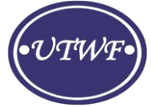Weaving
UTWF
Weaving is a fundamental process in the textile industry that involves interlacing yarns to create durable and versatile fabrics. At utwf, we use advanced weaving techniques and modern machinery to produce high-quality textiles for a wide range of applications.
Step-by-Step Weaving Process:
Yarn Preparation: The process begins with selecting premium-quality yarns. These yarns undergo various treatments like spinning, twisting, and dyeing to ensure strength, uniformity, and color consistency.
Warping: In this stage, warp yarns are arranged parallel to each other on a beam. Proper alignment is crucial to maintain fabric integrity during weaving.
Sizing: To enhance durability, warp yarns are coated with protective materials like starch or synthetic compounds. This step minimizes friction and breakage during weaving.
Weaving: The weaving process involves the interlacing of warp (longitudinal) and weft (transverse) yarns using automated looms. Depending on the design, we use plain, twill, satin, and jacquard weave patterns.
Finishing: After weaving, fabrics undergo finishing processes such as washing, bleaching, and softening to improve texture, appearance, and performance.


Final
Final Stage
Weaving (Fabric Formation)
The core process happens here. It includes:
- Shedding: Lifting specific warp threads to create an opening (shed).
- Picking: Inserting the weft yarn across the warp.
- Beating-Up: Pushing the weft into place with the reed.
- Take-Up & Let-Off: Rolling the woven fabric onto a beam while releasing more warp.
